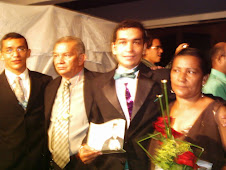Scientologists, Catholics and
More Money Than God
By GARRY WILLS
INSIDE SCIENTOLOGY
The Story of America’s Most Secretive Religion
By Janet Reitman
444 pp.
Houghton Mifflin Harcourt. $28.
RENDER UNTO ROME
The Secret Life of Money in the Catholic Church
By Jason Berry
420 pp.
Crown Publishers. $25.
We do not need these
books to tell us that money and religion make for a poisonous combination. But
it is of some interest to see that ancient truth confirmed in both a church as
relatively new as Scientology and one as ancient as Roman Catholicism. Even
religious leaders develop a certain swagger when they know they are backed by
bundles of cash. When a French court fined Scientology nearly a million
dollars, one of its officials shrugged that off as “chump change.” And when the
Vatican ran a deficit of nearly 2.4 million euros in 2007, an Italian
journalist familiar with the church’s finances dismissed the debt as “chopped
liver.” Chump change or chopped liver, both churches have bigger sums they can
get to and use, and few outsiders are given a look at how they do it. These two
books trace the cash source of theological confidence.
As Janet Reitman
describes in “Inside Scientology,” Scientology did not begin as a religion,
which its founder, L. Ron Hubbard came to consider his initial mistake. In 1950
Hubbard published his book “Dianetics,” which proposed a variant on the “mind
cures” that have littered the American landscape through most of its history.
He offered his followers a process of “auditing” that combined Freudian
sessions with elements of his former career as a writer of science fiction.
People being audited could relive their births, or test their future hopes on
the E-meter, a kind of super lie detector that revealed “the anatomy of the
human mind.” Mental health authorities, Reitman notes, were quick to condemn
Hubbard’s claims as fraudulent. He did not, at this point, have the money to
fight against such attacks, a situation he would spend the rest of his career
correcting.
Hubbard’s failure to
secure a strong financial base exposed him to a takeover of his concepts and
properties. Barely two years after founding the movement, he lost Dianetics to
a wealthy supporter named Don Purcell, who simply bought him out. To restart
his project, he needed protection for it. He found that protection in religion.
After all, one cannot buy out a religion. This “religion angle,” he wrote in
1953, is “a matter of practical business.” Being a church, Reitman writes, gave
Scientology tax exemption, clerical status for his “ministers” (who wore Roman
collars) and clerical exemption from the draft for these ministers. It also
allowed him to rally even non-Scientologists to his defense against
increasingly hostile government agencies, presenting any of his troubles as a
persecution of religion, violating the separation of church and state.
There was another
advantage to becoming a religion. In the 1960s, especially in Los Angeles, where
Hubbard’s early success came to him, there was a spiritual hunger among young
people that took them to religious figures like Maharishi Mahesh Yogi (the
Beatles’ guide) and the Hare Krishnas. Some of those who came into Scientology
as ’60s “kids” stayed on to hold responsible positions under Hubbard.
Hubbard’s experience
with Dianetics, Reitman writes, taught him to keep all parts of Scientology
under his personal control, to keep his governance secret, and to have a cash
supply to deal with enemies, real and imagined. It takes money, after all, to
sue the Internal Revenue Service 200 times after it revoked the church’s tax
exemption. The early criticisms Hubbard received from psychiatrists made him an
unremitting foe to all mental health activities but his own. The general public
became aware of this when the Scientologist Tom Cruise attacked psychiatry on
the “Today” show. But for years Scientology had been trying, with lawsuits,
propaganda and harassment, to bring down the mental health establishment.
psychiatrists maim and kill, read a sign carried by Scientologists outside a
London mental health center.
Hubbard’s feuds were
deadly. Of a person suspected of stealing his secrets he wrote his followers:
“The law can be used very easily to harass, and enough harassment on somebody
who is simply on the thin edge anyway . . . will generally be sufficient to
cause his professional decease. . . . If possible, of course, ruin him
utterly.” Those who opposed Scientology in any way were called “suppressive persons,”
of whom Hubbard wrote: “A truly suppressive person or group has no rights of
any kind, and actions taken against them are not punishable.” They “may be
tricked, sued, or lied to or destroyed.” Thus, when Hubbard became convinced
that government agencies were collecting negative information about
Scientology, Reitman writes, a secret agency of the church (Branch One) planted
operatives inside the I.R.S., the F.B.I., the Justice Department and that old
enemy, the American Medical Association. According to Reitman, they stole tens
of thousands of documents to use for their own smear campaigns. The church gave
them awards for this service.
Hubbard was particularly
fierce against defecting members, especially if they put online the higher
levels of enlightenment that were supposed to be revealed only to loyal
trainees. Hubbard feared ridicule, Reitman argues, since the upper levels of
disciples learned that a Galactic Confederation had destroyed earth millions of
years ago (using hydrogen bombs) and planted captive souls in volcanoes. Even
some of the most conditioned and docile disciples, including Tom Cruise, balked
at this secret knowledge when first exposed to it.
When Hubbard died in
1986, his leadership role was taken over by a less flamboyant figure, David
Miscavige, who had been a Scientologist since the age of 8. He followed the founder’s plans,
especially his “celebrity strategy,” conceived in 1955. Hubbard’s initial hopes
were to lure admired people like Ernest Hemingway,
Pablo Picasso and Edward R. Murrow into his church. But this ambition shrank,
by Miscavige’s time, to recruiting show business personalities. The big catches
here were John Travolta and Cruise, on whom Miscavige danced continual
attendance, in a tactic the church called “admiration bombing.” A glitzy
Celebrity Centre was built for any new catches, and less-known figures proved
useful. Nancy Cartright, the voice of Bart Simpson, gave the church $10 million
in just one of her years of devout service.
Reitman, a contributing
editor at Rolling Stone who spent five years trying to pierce the walls
Scientologists put up against outsiders, gives us the most complete picture of
Scientology so far. She seems, now, uncertain of its future. But its continued
existence, given its weird aspects, is its main claim to religion’s power. It
is something of a miracle.
The Catholic Church
offers a very different picture, but one where money is even more important.
Jason Berry, the reporter who broke several of the priest abuse scandals of
recent times, finds the same pattern of deception, denial and subterfuge in the
church’s handling of money as in its treatment of pedophiles. The Vatican comes
to its high-handed way with money in an understandable fashion. In the Middle
Ages, all authority was male and monarchical, so the pope became a king. His
multiple realms had all the appurtenances of a medieval monarch — armies,
prisons, spies, torturers, legal courts in papal service. The money flowed in
from many sources — as conquest, as tribute from subordinate princes (secular
and religious) or from the crops on farm lands held by the pope, who was not
accountable to anyone for use of these funds. When normal sources did not
satisfy papal ambition, clerical underlings invented new kinds of revenue —
like the granting of time off in Purgatory for cash contributions during life
(“indulgences” for sale).
All that seemed to be
ending in 1860 when Italy at last united its secular government and began
taking away the pope’s realms. Pope Pius IX rejected the Italian government’s
efforts at partial restitution, calling the secular regime illegitimate. He
made himself a “prisoner of the Vatican,” never venturing out into Rome, or
even addressing it from his balcony. Catholics in sympathy to Pio Nono’s
“martyrdom” by the modern state increased their popular donations to the
Vatican called Peter’s Pence. This donation arose in the seventh or eighth
century, when the pope was still a monarch. It was set aside from the monies
exacted from various parts of the papal empire, as something coming voluntarily
from the people in the pews. The announced purpose was for the pope to have
extra money for the charities he supported.
But after 1860 a surge
of sympathy made Catholics everywhere, but especially in America, pour large
sums into the Vatican, originally conceived as giving the pope military
assistance, but then turned over to him for any use. No longer were papal
charities the rationale. In fact, the lay cardinal who was Pius’s secretary of
state, Giacomo Antonelli, took all available Vatican sums for ambitious new
financing schemes. Already in 1857 he had used Peter’s Pence funds as
collateral for a new loan from the Rothschild banking firm. Antonelli made one
of his brothers the head of the Pontifical Bank. Another Antonelli brother
secured a monopoly on Rome’s grain imports (a key to power in Rome since
classical times). Antonelli soon had papal investments in countries all over
Europe. The pope’s distress was made the excuse for a new financial empire,
with no accountability for the funds used.
That non-accountability
continues. The Vatican issues statements of its assets — in 2007 the amount was
1.4 billion euros —but the Vatican Bank is off the books, as is a metric ton of
gold, and other things not reported. On a list of papal assets, St. Peter’s
Basilica and other historic sites are listed as worth one euro each. No wonder,
as Berry says, “the Holy See’s true net worth is invisible.”
Having set this
historical background, Berry begins his true project — the use of funds in the
American church during its modern time of troubles. He grants there are excuses
for the financial maneuvering of the Catholic bishops. “The Roman Catholic
Church in America is undergoing the most massive downsizing in its history,” he
writes. “Since 1995 the bishops have closed 1,373 churches — more than one
parish per week for 15 years.” There are many reasons for this wrenching
development — lower church attendance, which means fewer donations from the
pews; the movement of parishioners from inner cities to the suburbs, stranding
old ethnic structures; the loss of free labor in Catholic schools by the
declining number of nuns. We can add to this the payment of damages to the
victims of priest pedophiles — though many bishops claim they haven’t closed
churches because of the sex scandals.
Berry says it is hard to
verify this claim because the ordinary bishop is as loath to reveal his
transactions as the pope is. A lay group begun in Boston, the Voice of the
Faithful, asked that the financial arrangements of the diocese be exposed, and
it was fiercely resisted by bishop after bishop. Church authorities in some
cities banned the V.O.T.F. from meeting in any parish. The same bishops had
earlier opposed revealing what sums were paid to victims of sexual abuse.
Settlements forbade the victims from revealing this. Even when settlements were
reported, other hidden costs were kept secret — for instance, how much had gone
to expensive rehabilitation centers through which the pedophiles were endlessly
and uselessly recycled, and to legal costs while the bishops were denying
accusations.
Lay people were also
kept out of the decision on which churches to close. Good faith attempts by lay
people to cooperate in evaluating this procedure were rebuffed. While Cardinal
Sean O’Malley was trying to remedy the harm done the Boston diocese by Cardinal
Bernard Law’s recycling of pedophiles, his auxiliary bishop Richard Lennon was
managing a professedly separate operation to close churches — he would finally
shut down 62 in the Boston area. The opponents to Lennon’s plan alleged that he
was selecting properties most likely to bring the highest price for resale, not
taking into account community support, unconsidered resources or the
possibility of merged work with nearby parishes. At eight condemned parishes,
people devoted to their churches kept round-the-clock vigils, refusing to give
them up. Appeals were taken to Rome, but the man responsible for parishes,
Cardinal Castrillón Hoyos, refused them a hearing. Berry finds the Boston
pattern repeated in other dioceses, like those of Cleveland and Los Angeles.
Then, returning to Rome,
Berry shows the power of money to squelch evidence that the founder of the
ultra-conservative Legionaries of Christ, Father Marcial Maciel Degollado, was
a serial child molester and had illegitimate children in Mexico. I met Berry in
2002 at the bishops’ Dallas meeting on the sex scandals. He was just beginning
his exposé on Maciel, and I followed his work after that, since he was up
against vituperation from the Legionaries, criticism from people like William
Bennett, and a cold shoulder in Rome, where he went with Maciel’s victims to
plead their cause. Unfortunately, Maciel was a great favorite with Pope John
Paul II and his secretary of state, Angelo Sodano. It helped that Maciel
showered Rome’s cardinals with expensive gifts. Every Christmas Legionary
brothers fanned out across Rome to deliver lavish Christmas baskets to the
hierarchy, with fine wines, liqueurs and rare Spanish hams worth up to $1,000.
He sent a million dollars in support of the pope’s visit to Poland. He gave
large cash gifts to Sodano. He ordered a Mercedes-Benz for Cardinal Pio Laghi,
though Laghi turned it down. Sodano and others were entertained in style at the
Legionary headquarters.
Cardinal Ratzinger, who
had taken charge of all sex claims reaching Rome, sat on the charges against
Maciel, at the urging of Cardinal Sodano, who reminded him that Maciel was well
liked by Pope John Paul. Ratzinger held off until John Paul was clearly dying;
then he hurried to remove this incubus from the church. In December 2004
Ratzinger’s office ordered Maciel to step down, pending an investigation. Even
then the Vatican Press Office, under pressure from Sodano, denied that there
was any “canonical process” against Maciel. But once Ratzinger was Pope
Benedict XVI, he consigned Maciel to a period of prayer and penitence and began
a thorough re-evaluation of his order.
Whether Berry is
considering sex scandals or money scandals, or the refusal of the hierarchy to
be open with its own believers on many fronts, the thing that sours all
relations is secrecy — as we can see from the conduct of our own government.
Secrecy eats at the soul. Some are surprised that religion is so corruptible.
They should not be. When secrecy is used to protect a higher order of
knowledge, it can make the keepers of the secrets think of themselves as a
higher order of humans. Corruptio optimi pessima, goes the old saying. Blight at the top
is the deepest blight. It is the sin of taking God’s name in vain.
Garry Wills’s new book is “Verdi’s Shakespeare,” to be published in
October.


















Nenhum comentário:
Postar um comentário